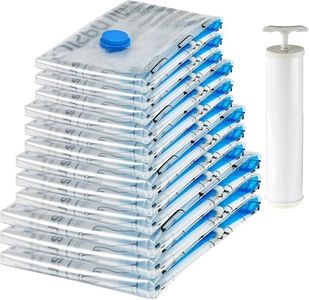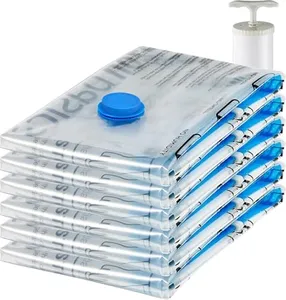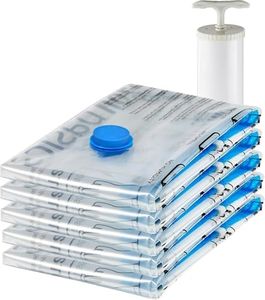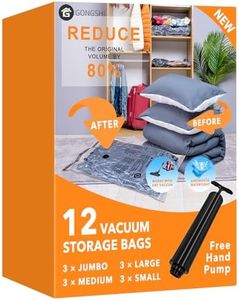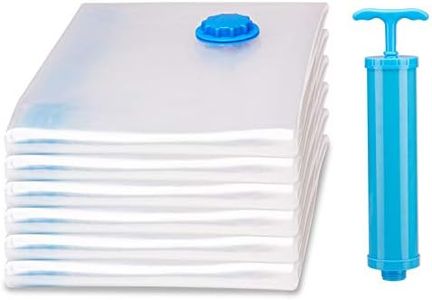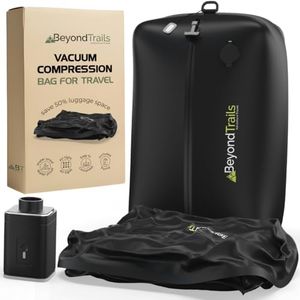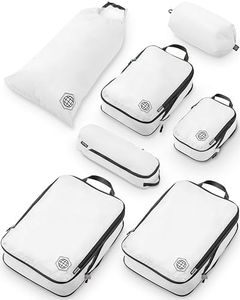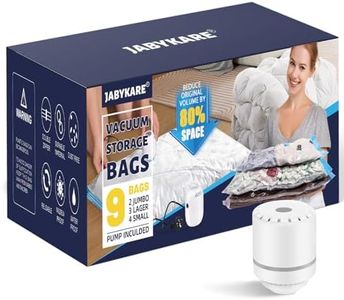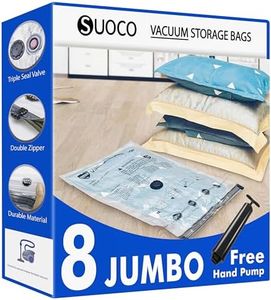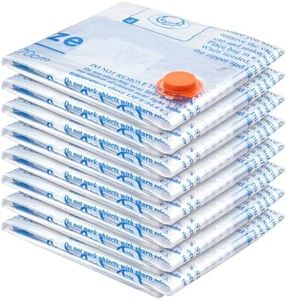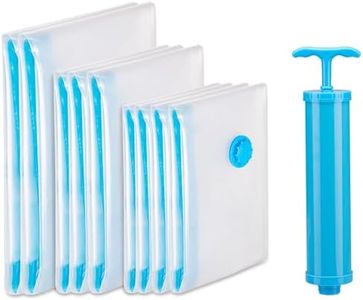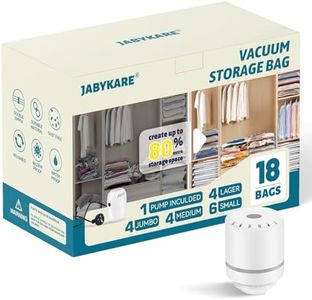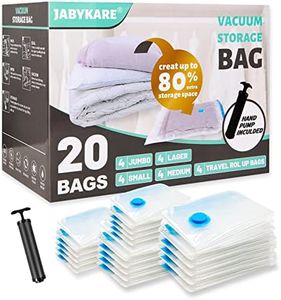We Use CookiesWe use cookies to enhance the security, performance,
functionality and for analytical and promotional activities. By continuing to browse this site you
are agreeing to our privacy policy
10 Best Compression Bags
From leading brands and best sellers available on the web.Buying Guide for the Best Compression Bags
Compression bags are extremely useful items for saving space when packing clothes, bedding, or other soft items—whether for travel, storage, or organization at home. Picking the right compression bag involves understanding how they work: you fill the bag, remove the air by rolling, pressing, or using a vacuum, and seal it to keep things compact. To find your best fit, think carefully about the type and size of items you'll be compressing, how often you'll use the bags, and whether you'll have access to a vacuum or need a manual solution.Bag MaterialBag material refers to what the compression bag is made from, typically types of durable plastic or reinforced polymers. This spec is important because it determines durability, how much protection your items get from moisture and pests, and how resistant the bag is to ripping during compression. Some materials are thin and lightweight, making them easier to fold and store, while others are thicker and more robust, offering better long-term protection but taking up more space on their own. If you plan to use the bags repeatedly or for heavier duty (like long-term storage), choose thicker or reinforced materials. For frequent travel or short-term needs, lightweight bags can be more practical.
Compression MethodCompression method refers to how you get the air out of the bag. The two main types are manual (where you roll or press to squeeze out air) and vacuum (where you use a vacuum cleaner or pump to suck out air). Manual bags are great for travel or use where you won’t have a vacuum nearby, but they may not compress items as tightly as vacuum bags. Vacuum-style bags get things extra flat but require equipment you might not always have. If you need versatility and portability, go manual. If maximum space-saving is your priority and you have a vacuum at hand, consider vacuum-sealed bags.
Bag SizeBag size describes the physical dimensions of each bag, which determines how much you can fit inside. Sizes usually range from small (for socks and underwear), medium (for shirts and towels), to large/x-large (for bedding, coats, or several days' worth of clothes). Large bags compress big, bulky items, but if you use several for small items, it can get messy or less efficient. Match the bag size to your packing needs: if you pack lots of small clothing pieces, get a few smaller bags; if you often store bedding or big sweaters, large bags make more sense.
Seal QualitySeal quality means how well the bag closes and keeps air from leaking back inside. This is crucial because a bad seal defeats the whole point of compression by letting air seep in quickly. Good bags feature double zippers or specialized sealing sliders for a tight seal. If you plan to store items long-term or want to avoid redoing the compression, prioritize bags known for strong, reliable seals.
ReusabilityReusability refers to whether a compression bag can be used over and over or is designed for one-time use. Most higher-quality bags should be reusable, but cheaper or ultra-thin models could show wear or lose effectiveness after a few uses. If you pack or store things often, or plan to use your bags for multiple trips or seasons, choose products advertised as reusable and read any reviews about how they hold up over time.
